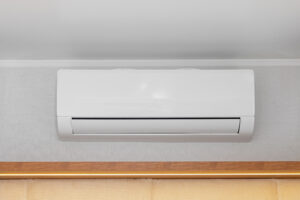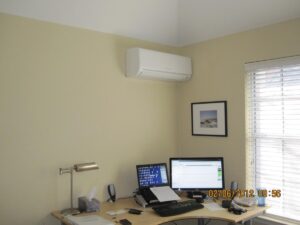Can you add another zone to a mini-split?

I’ll be honest—this is probably the most common question I get from homeowners who already have mini-splits. They’ve got one zone working great, but now they’re thinking, “Can I add zones to make this even better?” The short answer is maybe. The longer answer? Well, that’s what we’re here for.
The Reality Check You Need
Here’s the thing about wanting to add zones to your existing system: it’s not always as straightforward as you might think. I wish I could tell you it’s always possible, but that would be setting you up for disappointment.
Your existing outdoor unit is the key player here. Think of it like the heart of your system—it can only pump so much refrigerant to so many places. When you originally installed your mini-split, that outdoor unit was sized for a specific number of zones. You can’t just keep adding indoor units indefinitely without running into problems.
Most outdoor units have what we call “open ports”—basically unused connections where you can add zones. But here’s where it gets tricky, just because there’s a port doesn’t mean your system has the capacity to handle another zone effectively.
Checking Your System’s Capacity
Before you get excited about expanding, you need to know what you’re working with. This is where having your original installation paperwork comes in handy, though let’s be real, most people don’t know where that is.
Your outdoor unit has a BTU rating, and each indoor unit you want to add zones with needs a certain amount of that capacity. I’ve seen homeowners try to add zones to systems that were already maxed out, and the result is nobody’s happy with the performance.
The manufacturer’s specifications will tell you the maximum number of indoor units your outdoor unit can handle. Sometimes it’s two, sometimes it’s eight. But capacity isn’t just about numbers—it’s about the actual cooling and heating load of the spaces you want to serve.
When You Can Successfully Add Zones
Let me tell you about a job I did last spring. The homeowner had a single-zone system in their living room, and they wanted to add zones to their bedroom and home office. Their outdoor unit was oversized for just the living room, so we had plenty of capacity to work with.
We were able to add zones by running new refrigerant lines to the additional rooms and installing the indoor units. The whole process took about a day and a half, and now they’ve got perfect temperature control throughout their main living areas.
This scenario works well when your original system was installed with future expansion in mind, or when you’ve got an outdoor unit that’s larger than what you’re currently using.
The Technical Side of Adding Zones
When you decide to add zones, it’s not just about slapping up new indoor units. The refrigerant lines need to be sized properly, and the electrical connections have to be right. Each new zone needs its own power supply and control wiring.
Here’s something most people don’t think about: adding zones changes the balance of your entire system. Your existing zone might perform differently once you’ve got additional zones pulling from the same outdoor unit. It’s not always a problem, but it’s something to consider.
The installation process involves connecting new refrigerant lines to your outdoor unit, running power to the new indoor units, and setting up the controls. If your outdoor unit doesn’t have enough open ports, you might need additional components like a branch box or manifold.
Signs Your System Can Handle More
There are some good indicators that you’ll be able to add zones successfully. If your current zone cools or heats faster than you need it to, that’s often a sign you’ve got extra capacity. Similarly, if your system cycles on and off frequently rather than running continuously, you might have room to expand.
I always tell clients to pay attention to how their system behaves during peak demand periods. If it’s struggling to keep up with just one zone during the hottest or coldest days, adding more probably isn’t going to work well.
Another good sign is if you’ve got obvious unused ports on your outdoor unit. These look like capped connections where additional refrigerant lines could be attached.
When Adding Zones Isn’t the Answer

Sometimes the desire to add on comes from problems with your existing system rather than a genuine need for expansion. If your current zone isn’t keeping you comfortable, adding more zones might just spread the problem around.
I worked with a homeowner last year who wanted to add zones because their bedroom was too hot. It turns out that their existing indoor unit was undersized for the space. Adding zones would have made the problem worse, not better. Instead, we replaced the indoor unit with a larger one, and problem solved.
If your outdoor unit is already working at full capacity, trying to add more load will result in poor performance across all zones. Nobody wants that.
Alternative Solutions to Consider
Before you commit to adding zones, consider whether there are other ways to achieve what you’re looking for. Sometimes relocating an existing indoor unit or upgrading to a more powerful model can solve your comfort issues without the complexity of adding zones.
Multi-zone systems aren’t always the answer, either. If you’ve got a large space that needs better coverage, a single larger unit might work better than trying to add to an existing system.
The Professional Assessment
Here’s my advice, don’t try to figure this out on your own. The calculations involved in determining whether you can add zones are complex, and the consequences of getting it wrong can be expensive.
A qualified technician can assess your current system’s capacity, evaluate your electrical setup, and determine whether adding zones makes sense for your specific situation. They’ll also be able to suggest alternatives if expansion isn’t feasible.
Cost Considerations
Adding zones to an existing system is usually more cost-effective than installing a completely new multi-zone system, assuming your current setup can handle it. You’re leveraging the outdoor unit you already have, which is typically the most expensive component.
However, if your system needs significant modifications to accommodate additional zones, the costs can add up quickly. Sometimes it makes more sense to start fresh with a properly sized multi-zone system.
Making the Decision
The bottom line on whether you can add zones comes down to capacity, compatibility, and cost. If your outdoor unit has the capacity and the right connections, and if your home’s electrical system can handle the additional load, then yes, you probably can.
But if your system is already maxed out, or if the modifications required are extensive, you might be better off with a different approach. Every situation is unique, and what works for your neighbor might not work for you.
The key is getting a proper assessment before you commit to anything. That way, you’ll know exactly what’s possible and what makes the most sense for your specific setup.

